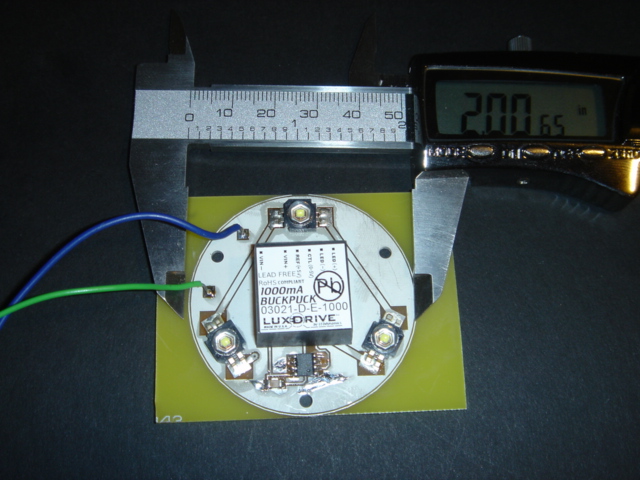- Thu Sep 18, 2008 8:47 pm
#55630
I have been doing quite a bit of research into MCPCB vs FR4 PCB with thermal vias, got heavily involved with the math, and including some actual measurements. More is possible than what was laid out in Luxeon's app note. I have come to disagree with several aspects of their thermal design they outlined there. They held back.
There are a lot of details and some catches to the design process. However, get this- thermal via construction can outperform MCPCB for any electrically-neutral thermal path emitter such as the Rebel. Even with poor design it competes. With excellent layout it can beat out MCPCB even when using Gold Phoenix standard 0.064" FR4 and 1oz copper.
IF special features are employed (thinner FR4, thicker copper), then thermal via construction blows MCPCB out of the water.
However, this may be unnecessarily expensive. If you're running 1W LEDs and only have 4C/W in the thermal board and the Rebel itself is 10C/W junction-to-pad then there's little practical reason to spend a lot of $ for unusually thick copper and special-order thin board to get the thermal resistance of the thermal via board down to 2C/W. Most mfgs charge quite a premium for anything unusual.
MCPCB is a necessarily evil for non-isolated thermal pad devices, but a somewhat poor choice for these isolated thermal pad device. There's no need for that electrical insulating layer and it comes with a significant thermal conductivity penalty. The MCPCB can still be "adequate" though for a single emitter per Star setup, since those MCPCB Stars cost like $0.50 well that's probably a good choice overall. If you want more than one device per Star then the MCPCB may show increasingly poor performance but a thermal via can perform with fairly high density without much increase in per-device thermal resistance at all. If you need a custom design, MCPCB is the wrong choice. It's both expensive and offers only limited performance.
At least that's what I got from looking at the specs and thermal measurements of MCPCB commonly used in Stars. I know there's a solid copper-core MCPCB and ones with higher tech insulators. I don't expect this tech to be readily accessible so I didn't look much into it.
Filling the vias with solder does little to improve the thermal resistance actually. The volumetric thermal resistance of solder is relatively high and the column diameter is tiny. That's easily calculated, on the larger 0.5mm vias it reduced resistance by ~25% (much less on smaller vias) and I see no reason to doubt the applicability of the numbers I got. But the real problem is that allowing solder to flow through the vias to the back results in solder flowing onto the back, reducing the flatness which will increase the board-to-sink resistance. Can't put soldermask back there! As usual I came up with some somewhat elaborate tricks to make this work but seeing it's only 25% improvement at best then it's "nice" but may not even justify the effort.
Unfortunately, note that home etching cannot produce thermal-via construction because it won't produce plated through-hole vias.
I thought what I'd do was, I'd pretend I was one of those deaf-mutes.

